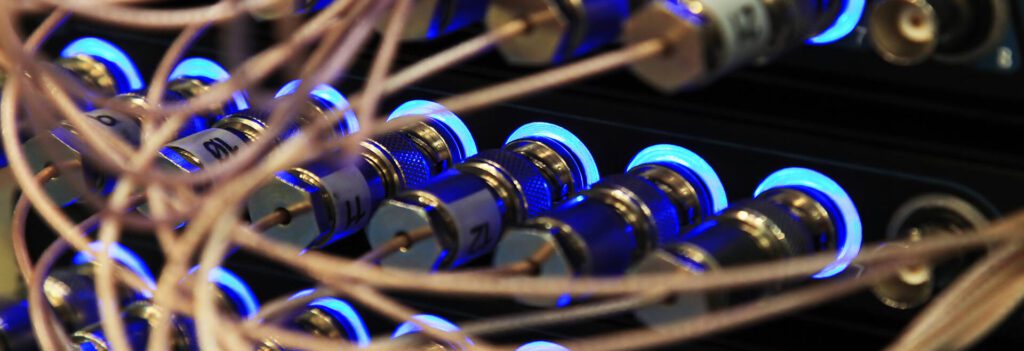Did you know the internet has layers – and whether you’re on layer 2 or layer 3 can make a big difference in how your business connects?
It’s easy to think of the internet just as… well, the internet! You have a connection via copper, coax, or fibre, and that’s where email comes from. As your business grows, you’ll need more than just web access so understanding how data connections are made is essential for supporting that growth. Learn more about these layers and what they mean for you.
What Are These Layers & How Many are There?
Meet the Open Systems Interconnection – OSI – Model. This is a conceptual framework that provides standard definitions for data transfer between different computer systems.
The OSI model divides data transmission into 7 layers. At the bottom is Layer 1, aka, the “Physical” layer, which includes cabling, voltage, pin layout, etc. As the layers increase, what they do becomes more abstract, but for now, let’s focus on Layers 2 and 3.
The Seven Layers of the OSI Model:
- Seven: Application Layer
- Six: Presentation Layer
- Five: Session Layer
- Four: Transport Layer
- Three: Network Layer
- Two: Data Link Layer
- One: Physical Layer
Layer 2 vs. Layer 3
The majority of residential (and many business) internet connections happen over Layer 3, aka, the Network Layer. Here, data is routed between networks via logical addresses. You might hear this referred to as the “public internet.”
If you think of the internet in terms of your daily commute, you’ll get a sense of how this works. Imagine you’re in a hurry and traffic on the major routes is backed up. You still have somewhere to be though, so you frantically start going down back roads and weave your way through side streets to get where you need to go as fast as possible.
For all your hustle and maneuvering, this ends up taking just as much time as if you were to sit and wait in traffic. You get there in the end… but a delay is a delay and you’re also out of gas.
Sending data over the public internet can be like negotiating traffic jams. Routers will find you a way to get there, but the speed and security you get are at the mercy of everyone else trying using these routes.
The internet works like this:
- Data leaves your computer
- It travels through a network of carriers
- It goes out on your carrier, then chooses the next best carrier in line, then the next and the next, etc. until it finally reaches the intended end location.
Just like a traffic jam, you have no control over the internet. When trying to connect to a cloud server, your data could be taken through a random high latency and overused path and there’s nothing you can do about it.
Meanwhile on Layer 2…
In between the Physical and Network Layers is… Layer 2: the Data Link Layer. This is where data is encoded, transferred, and decoded on a node-to-node basis.
It’s an incredibly direct and secure way to move information. If the public internet is like frantically dodging cars in traffic, then Layer 2 connectivity is like a subway system travelling on a dedicated, secure underground track. The subway maintains the same speed, going from Point A to Point B with no failure points – and completely unaffected by bad drivers.
Sooner than later, Layer 3 connectivity won’t be enough for your business, and there’s only so much that a bandwidth upgrade can do. Layer 2 connectivity doesn’t just increase the speeds you can access but creates secure connections between all points on your network. As you upgrade to cloud apps, start creating offsite backups, open more locations… you’ll need more security and reliability.
L2 access ensures your data is sent on a completely secure and dedicated point-to-point connection. You avoid the entire carrier-to-carrier process which means you:
- Control jitter and packet loss
- Reduce failure points
- Receive guaranteed speeds
- Have complete security
L2 for Cloud Connect
Creating secure, direct access to cloud services is a big deal. As more applications move to subscription models or in-browser access, your financials, client data, and more can all touch the public internet on its way to the cloud and back. Needless to say, this is a huge risk.
Choosing a provider of cloud computing services is one thing, but how you connect to them is critical. Once you have a secure provider who complies with your local data storage laws, make sure you have an equally secure and compliant connection to them. Layer 2 access lets you add providers as if they were a node on your private network.
The Bottom Line
Internet isn’t just internet – and as your organization grows, you’ll need more. The difference between Layer 3 and Layer 2 access can make or break your growth efforts, so choose wisely.
At iTel, we specialize in creating streamlined solutions for some of the most complex business networks. Talk to an associate today for more information.




